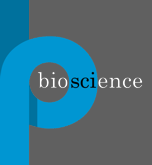How to Read Nutrition Labels
In the pursuit of healthier dietary habits, one of the most valuable tools at your disposal is nutrition labels. These labels provide crucial information about the nutritional content of packaged foods, helping you make informed choices that align with your health goals. However, reading and deciphering nutrition labels can be daunting, especially with the abundance of information presented. This article aims to empower individuals interested in improving their dietary habits by providing a comprehensive guide on how to read nutrition labels effectively and make healthier food choices.
When you're ready to take the next step in your journey towards better nutrition, consider seeking professional assistance to further analyze and interpret your dietary choices. If you're looking to buy literary analysis paper at https://exclusivepapers.net/buy-a-literary-analysis-paper.php that explores the impact of nutrition on overall health and well-being, expert guidance can help you gain deeper insights into the complex world of nutrition labels and their implications on your lifestyle choices.
Decoding Nutrition Labels
Overview of Nutrition Facts Panel
The Nutrition Facts panel is a standardized chart found on most packaged food items. It includes essential information about the serving size, calories, macronutrients (such as fat, carbohydrates, and protein), vitamins, minerals, and other nutrients present in the product. Understanding the layout of the Nutrition Facts panel is the first step in comprehending the nutritional content of a food item.
%Daily Value (DV) and Its Significance
The % Daily Value (DV) indicates how much a nutrient in a serving of food contributes to your daily diet based on a 2,000-calorie-per-day reference diet. It serves as a general guide to help you determine whether a food item is high or low in a particular nutrient. For example, a DV of 5% or less for a nutrient is considered low, while 20% or more is considered high. Utilizing the % DV can assist you in identifying foods that provide adequate nutrients while avoiding those high in unhealthy components.
Making Informed Food Choices
Evaluating Nutritional Content
Assessing the nutritional content of a food item goes beyond simply looking at calories. Take into consideration the levels of fat, saturated fat, trans fat, sodium, sugars, and fiber. Aim to choose foods that are lower in unhealthy components and higher in essential nutrients like vitamins and minerals.
Considering Serving Sizes
Understanding the serving size specified on the label is essential for accurate nutrient assessment. Be mindful of portion sizes, as what may appear to be a single serving could actually contain multiple servings. Adjusting nutrient values based on serving size enables you to make more precise decisions about your dietary intake.
Tips for Effective Nutrition Label Reading
Plan Ahead for Grocery Shopping
Create a shopping list based on your nutritional needs and intended meal plans. Planning ahead helps you avoid impulsive purchases and encourages healthier choices during grocery shopping.
Comparing Similar Products
When choosing between similar products, carefully analyze the nutrition labels to find the most suitable option for your dietary goals. Look for lower levels of unhealthy components and higher nutrient content.
Conclusion: Empowering Yourself Through Nutrition Label Literacy
The ability to read and understand nutrition labels is a powerful skill that empowers you to make healthier food choices. By decoding nutrition labels, evaluating nutritional content, and applying effective reading strategies, you can make informed decisions that positively impact your dietary habits and overall well-being. Embrace the knowledge gained through nutrition label literacy and embark on a journey towards a healthier and more nourishing lifestyle.
